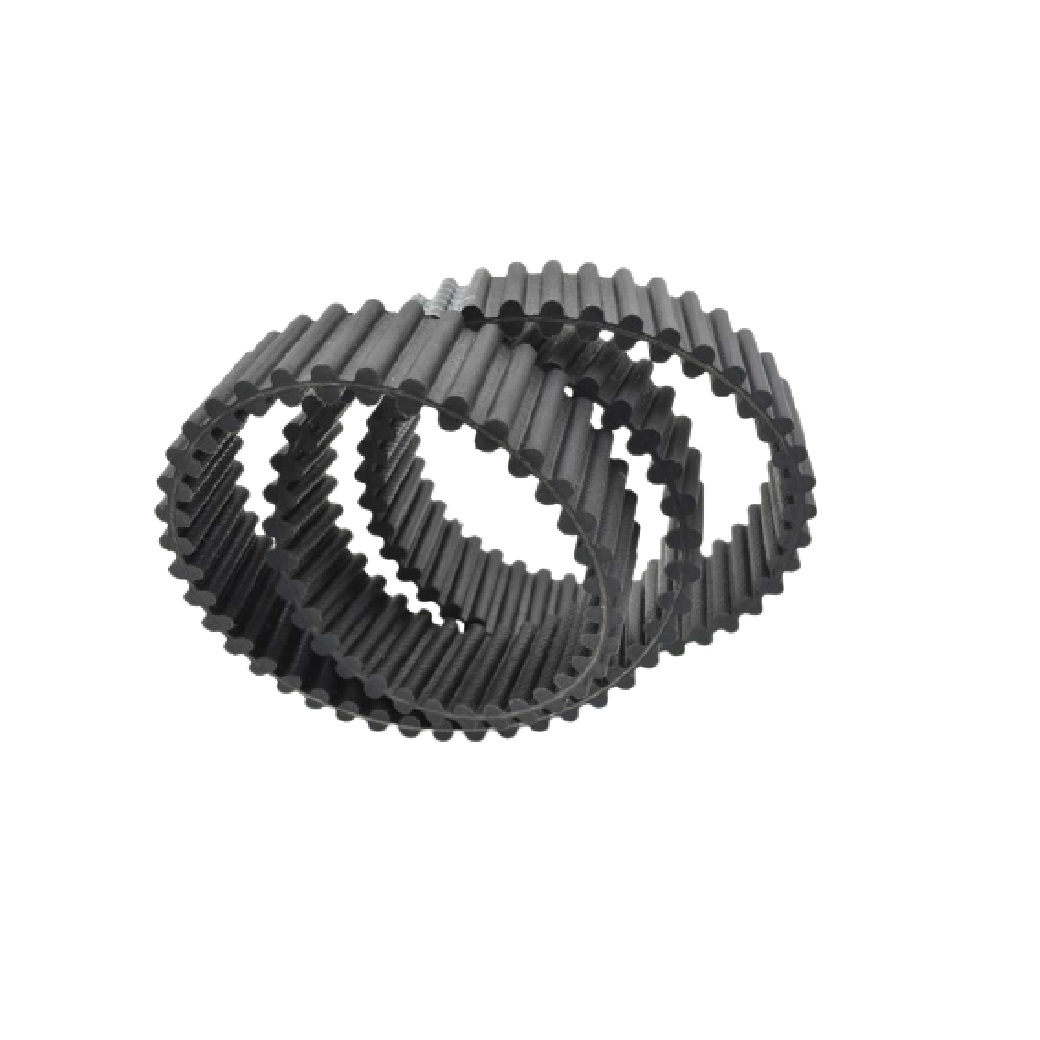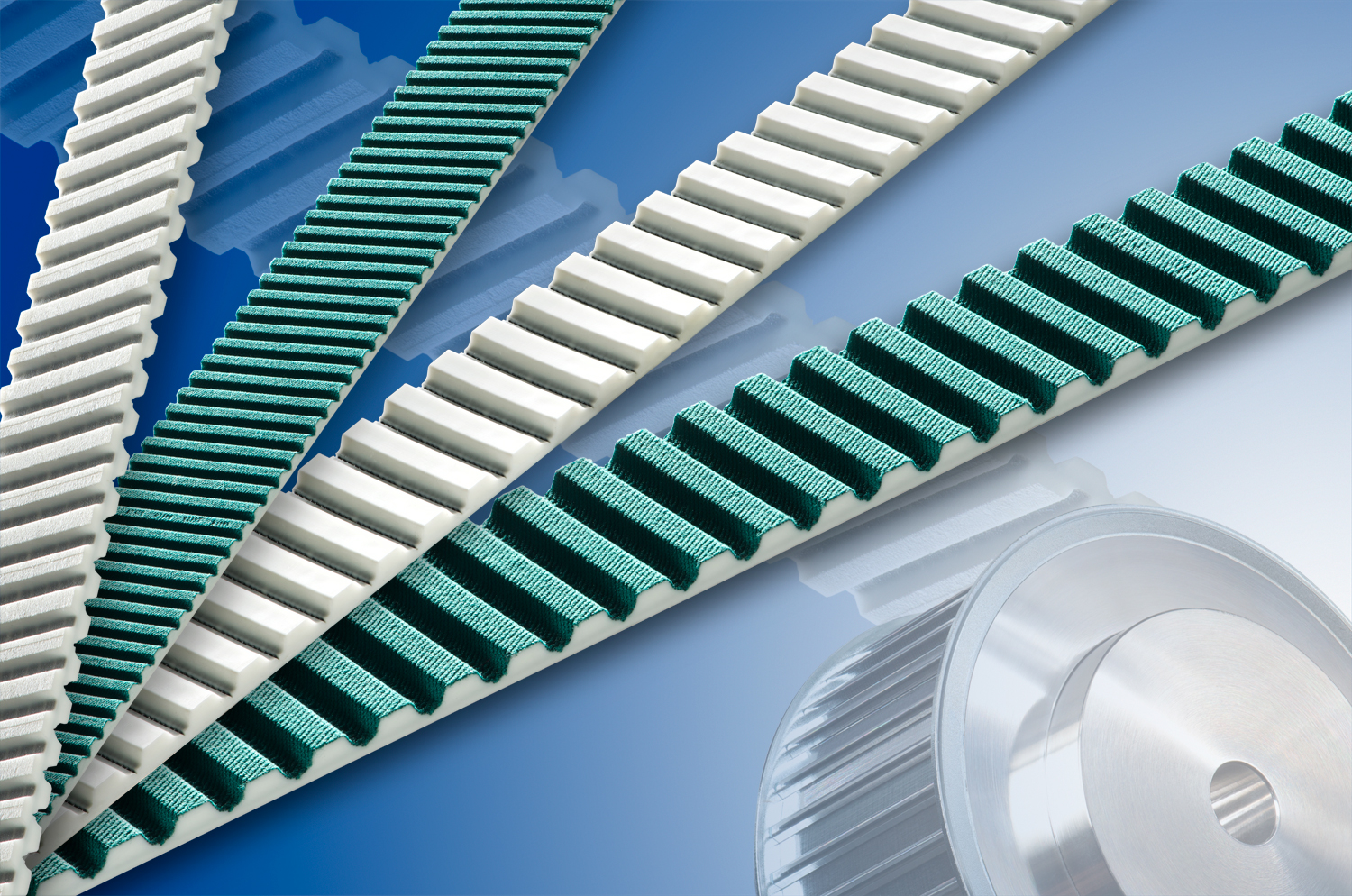Product Description
Poly V Belt ( V Ribbed Belt)
Feature
Poly V belt is made up of strong high modulus threads and special neoprene rubber compound. By jointing each V belt, they have features of high rigidity on horizontal direction and smooth move, and not easy to shake, to slay and to overturn. V-Ribbed belt is formed and vulcanized only in 1 time. It has an entire structure, even flowing power on each belt, large load capacity and long life. It is fit for powerful mechanical transmission. It has the advantages of both v Belt and flat transmission belt, soft and tough, tight and efficient.
| Type No. | Rib Section | Angle of Rib | Thickness | Rib Numbers | Length Range |
| PH | 1.6 | 40 | 3mm | 3-54 | 540-1270 |
| PJ | 2.34 | 40 | 4mm | 3-36 | 540-1880 |
| PK | 3.56 | 40 | 4-6mm | 3-23 | 600-2400 |
| PL | 4.7 | 40 | 10mm | 3-16 | 900-3000 |
| PM | 9.4 | 40 | 17mm | 3-8 | 1500-3000 |
Material option
. Rubber: CR or EPDM
. Cord: Normal quality or High Tension Quality
Production
Packing & Shipping
Warehouse
Certificate
FAQ
Q1. Can I have a sample order?
Yes, any sample order is welcome to know the quality of our products.
Q2. What about the lead time of the sample or the final order?
2-5 days for normal sample.
20-30 days for a formal order.
Q3. How much is the minimum quantity for each item in 1 order?
One CZPT quantity is ok. Usually around 50pcs for small item, 10pcs for big item.
Q4. Is it possible to print our logo or brand on the belt?
Yes, we can print your logo or design on the belt after receipt of your formal authorization letter of the logo or your brand.
Q5. Do you offer the guarantee for your product?
Yes, usually we offer 1 year warranty for all of our products.
/* March 10, 2571 17:59:20 */!function(){function s(e,r){var a,o={};try{e&&e.split(“,”).forEach(function(e,t){e&&(a=e.match(/(.*?):(.*)$/))&&1
| Standard or Nonstandard: | Standard |
|---|---|
| Application: | Textile Machinery, Garment Machinery, Conveyer Equipment, Electric Cars, Motorcycle, Food Machinery, Mining Equipment, Agricultural Machinery, Car |
| Feature: | Flame-Retardant, Anti-Static, Wear-Resistant, High Temperature-Resistance |
| Tensile Strength: | Strong |
| Material: | Rubber |
| Type: | V Belt |
| Samples: |
US$ 0.1/Piece
1 Piece(Min.Order) | |
|---|
| Customization: |
Available
| Customized Request |
|---|

What are the reliability and durability aspects of V-belt tensioners in ensuring consistent tension?
V-belt tensioners play a crucial role in ensuring consistent tension in V-belt systems. Reliability and durability are essential aspects of V-belt tensioners that contribute to their ability to maintain consistent tension over time. Here’s a detailed explanation of the reliability and durability aspects of V-belt tensioners in ensuring consistent tension:
- Construction Materials:
- Design and Engineering:
- Bearing Systems:
- Wear and Fatigue Resistance:
- Environmental Resistance:
The choice of construction materials significantly affects the reliability and durability of V-belt tensioners. High-quality materials with excellent strength, wear resistance, and corrosion resistance are essential for long-term performance. Common materials used in tensioner construction include robust metals, advanced polymers, and specialized alloys. These materials ensure that the tensioner can withstand the forces and operating conditions encountered in V-belt systems, such as high loads, belt tension, temperature variations, and exposure to contaminants.
The design and engineering of V-belt tensioners are critical factors in their reliability and durability. Tensioners should be designed to distribute loads evenly, minimize stress concentrations, and provide smooth operation. Advanced engineering techniques, such as finite element analysis, are employed to optimize the design and ensure structural integrity. Additionally, attention to detail in the design process helps to minimize potential failure points, improve load-carrying capacity, and enhance overall performance.
The bearing systems within V-belt tensioners are crucial for their reliable operation. High-quality bearings, such as ball bearings or roller bearings, are used to support the rotating components and withstand the radial and axial loads. Proper bearing selection, lubrication, and sealing mechanisms are essential to ensure smooth rotation, minimize friction, and prevent premature wear. Reliable bearing systems contribute to the consistent performance of the tensioner and help maintain the desired tension in the V-belt system.
V-belt tensioners are subjected to continuous cyclic loads and motion, which can lead to wear and fatigue over time. To ensure durability and reliability, tensioners are designed and constructed to resist wear and fatigue. This may involve the use of wear-resistant coatings, hardened surfaces, or specialized materials that can withstand repetitive loading without deformation or failure. By incorporating wear and fatigue-resistant features, tensioners can maintain their performance and tensioning capabilities over an extended service life.
V-belt tensioners often operate in diverse environmental conditions, including temperature extremes, humidity, dust, and chemical exposure. Reliable tensioners are designed to withstand these environmental factors and provide consistent tension regardless of the operating environment. Protective coatings, seals, and corrosion-resistant materials are employed to prevent damage from contaminants or chemical exposure. By ensuring environmental resistance, tensioners can maintain their functionality and performance, thereby ensuring consistent tension in V-belt systems.
In summary, the reliability and durability of V-belt tensioners are crucial aspects in ensuring consistent tension in V-belt systems. Construction materials, design and engineering, bearing systems, wear and fatigue resistance, and environmental resistance all contribute to the long-term performance and reliability of tensioners. By selecting high-quality tensioners that are designed and constructed to withstand the demands of V-belt applications, users can have confidence in the consistent tensioning capabilities of the tensioner, leading to reliable and efficient operation of the V-belt system.

What is the impact of proper tensioning on the lifespan and reliability of V-belts?
Proper tensioning plays a crucial role in the lifespan and reliability of V-belts. Maintaining the correct tension level in V-belts is essential for their optimal performance and longevity. Here’s a detailed explanation of the impact of proper tensioning on V-belts:
- Preventing Slippage:
- Reducing Wear and Stretching:
- Preventing Belt Misalignment:
- Enhancing Load-Carrying Capacity:
- Improving System Efficiency:
Proper tensioning ensures that V-belts have sufficient grip on the pulleys. When V-belts are under-tensioned, they can slip on the pulleys, leading to inefficient power transmission and reduced belt lifespan. On the other hand, over-tensioning can put excessive stress on the belts and pulleys, causing premature wear and failure. Proper tensioning prevents slippage and maintains the necessary friction between the V-belts and the pulleys for reliable power transfer.
Correct tensioning helps minimize wear and stretching of V-belts. When belts are under-tensioned, they may experience excessive bending and flexing, leading to accelerated wear and elongation. Over-tensioning can cause excessive strain on the belts, resulting in stretching, fatigue, and reduced belt life. Optimal tensioning minimizes these issues, allowing V-belts to operate within their designed parameters and reducing the risk of premature wear and failure.
Proper tensioning helps maintain proper belt alignment. When V-belts are under-tensioned or over-tensioned, they can become misaligned on the pulleys. Misalignment can lead to uneven belt wear, increased friction, and belt damage. Optimal tensioning ensures that the belts remain aligned with the pulleys, reducing stress, minimizing wear, and improving overall belt reliability.
Correct tensioning maximizes the load-carrying capacity of V-belts. When V-belts are properly tensioned, they can transmit higher levels of torque and power without slipping or excessive stress. This allows V-belts to handle the intended loads and operate efficiently under demanding conditions. Improper tensioning can compromise the load-carrying capacity of V-belts, leading to reduced performance, increased wear, and potential system failures.
Proper tensioning contributes to the overall efficiency of V-belt-driven systems. When V-belts are correctly tensioned, power transfer is optimized, and energy losses due to slippage or excessive friction are minimized. This results in improved system efficiency and reduced energy consumption. Optimal tensioning helps maintain the system’s performance, ensuring reliable operation and reducing the risk of downtime and costly repairs.
In summary, proper tensioning significantly impacts the lifespan and reliability of V-belts. It prevents slippage, reduces wear and stretching, maintains belt alignment, enhances load-carrying capacity, and improves system efficiency. Manufacturers, maintenance professionals, and operators should follow recommended tensioning guidelines and regularly inspect and adjust the tension of V-belts to ensure optimal performance, extend belt life, and minimize the risk of belt failure.

Can you provide examples of products or machinery that rely on V-belt tensioners for efficient operation?
V-belt tensioners play a critical role in ensuring efficient operation in various products and machinery across different industries. Here are some examples of products and machinery that rely on V-belt tensioners:
- Automotive Engines:
- Industrial Machinery:
- HVAC Systems:
- Power Generation Equipment:
- Agricultural Machinery:
- Woodworking Machinery:
In automotive engines, V-belt tensioners are essential for the proper functioning of various components. Examples include the alternator, water pump, power steering pump, air conditioning compressor, and superchargers. V-belt tensioners ensure optimal tension in the belts, preventing slippage and ensuring efficient power transfer to these components.
A wide range of industrial machinery relies on V-belt tensioners for efficient operation. This includes conveyor systems, pumps, compressors, fans, blowers, and generators used in manufacturing plants, mining operations, construction sites, and material handling facilities. V-belt tensioners help maintain proper tension, preventing belt slippage and ensuring reliable power transmission.
Heating, ventilation, and air conditioning (HVAC) systems commonly incorporate V-belt tensioners. These tensioners are used in HVAC fans, blowers, and pumps, which are critical components of climate control systems in buildings and industrial facilities. Proper tensioning of V-belts with tensioners ensures efficient operation and optimal performance of the HVAC equipment.
V-belt tensioners are vital in power generation equipment such as generators and turbines. These tensioners help maintain the proper tension in the belts, ensuring efficient power transfer from the prime mover to the generator or turbine. Reliable tensioning is crucial for the optimal performance and operation of power generation systems.
Agricultural machinery heavily relies on V-belt tensioners. Tractors, combines, and various agricultural implements use V-belts to transfer power to components such as grain augers, hay balers, and irrigation pumps. V-belt tensioners ensure proper tensioning, preventing slippage and ensuring efficient operation in demanding agricultural environments.
Woodworking machinery, such as saws, planers, and sanders, often utilize V-belt tensioners. These tensioners help maintain the proper tension in the V-belts that drive the cutting tools and other components of the woodworking equipment. Efficient tensioning ensures precise and reliable operation in woodworking applications.
These are just a few examples of the wide range of products and machinery that rely on V-belt tensioners for efficient operation. V-belt tensioners are utilized in various other industries and applications, including marine propulsion systems, construction equipment, mining machinery, and more. The specific use of V-belt tensioners depends on the requirements of the application, ensuring reliable power transmission, extended belt life, and optimal performance.


editor by CX 2023-12-19